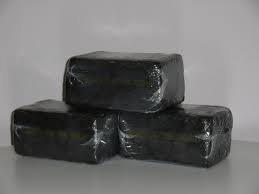Requirements on Stemming Used In Blast Furnaces
2016-07-11
The refractory materials that are used to plug the tapping holes are called stemming. In most small and medium blast furnaces, stemming used in the tapping hole is mainly composed of fire clay clinker particles, coke and asphalt, while stemming used in large and medium blast furnaces is made of high alumina materials, silicon carbide and carbon materials.
A small and medium blast furnace generally has one tapping hole and 2-3 slag holes, while a large and medium blast furnace has 2-4 tapping holes and 1-3 slag holes. When the grade of the iron ore is high, the amount of slags will be small. In large blast furnace, sometimes it is no need setting up slag holes. Since the size of the furnace becomes larger and larger, the frequency of tapping increases, resulting in an excessive burden on the tapping hole. Therefore, tap holes are subjected to extremely harsh working conditions.
Stemming should meet the following requirements:
(1) Good plasticity and adhesion to be easy to squeeze into and fill the voids and cracks.
(2) Appropriate porosity to be easy to discharge water when drying.
(3) Small high-temperature volume shrinkage to avoid cracks.
(4) Good sintering properties, good strength and good resistance to erosion and corrosion.
(5) Easy to open to ensure uniform outflow of molten iron and slag.
